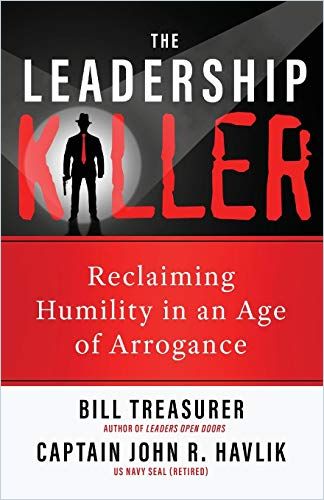“Courage Is Fearful, not Fearless.”

Bill, in many companies, budgets and targets have recently been set for the year, which often causes uncertainty in reasonably stable economic times. Currently, by all accounts, it’s even worse. So, in two words at a time, what behavior should executives avoid at all costs now, and why?
Bill Treasurer: Maybe this is three words, but my answer would be: “Don’t freak out.” And that’s the other way to say: “Remain composed.” Whenever we face destabilization or frantic change, it feels unsettling. And the people you’re leading will be worried even more than you are in such a situation – they’re biting their nails and feeling anxious. If you as a leader transmit the same to them, even if you’re transmitting it at level four out of ten, they’ll receive it at eight, and then they’ll give it to others at ten. So keeping calm in such situations is crucial.
How do you train this skill?
First, acknowledge that business cycles ebb and flow. The cycles may feel uncomfortable at times, but they are normal. Second: Bring to preeminence in your thinking that the prime focus of any organization is to make money or save money. As a leader, whether you’re a cost center or a revenue generation center to the business, you must be conscious of those two levers. So, ask yourself: Am I helping the company save money or am I helping the company make money? This part of your job usually doesn’t change regardless of the instability, and you, as a leader, need to communicate that prime focus to people.
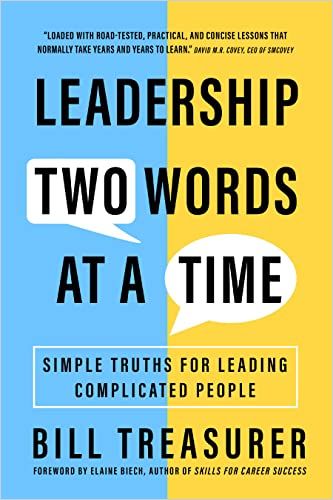
So, for example, when it comes to such tough conversations: Savings need to be made in a specific department or within a particular team. And in five minutes, you, the executive, are talking to the team lead to discuss those savings. Now, what should you by no means do?
Don’t commiserate if you find the other person starting to complain and you feel tempted to say, “I know, I can’t believe that the leaders are deciding to go in that direction.” You will lose credibility if you do that. Instead, you want to redirect them by enlisting and engaging: Enlisting their influence towards the direction of what you want by way of goals. Basically, you’re enlisting their courage. Something like, “You’re an influential person here. You’re in a role where people are watching you right now. The business needs to reach this goal, and we need your support and influence to help us achieve that goal.” That way, you enlist their engagement around their sense of responsibility, reminding them of the prime focus of making or saving money. “We’ve got to make and save money for the business. And right now, we’re moving into cost cutting.”
You must “coach” your team leader into this kind of behavior. Is that what you’re saying?
Indeed. It’s about normalizing discomfort. We all know the word team building, but a prime responsibility of a leader is building courage among the people they’re leading.
One important thing to stress when you move into the leadership role is to educate the team that all of you will spend time in discomfort because people don’t grow in a zone of comfort.
Bill Treasurer
That’s true of organizations, and that’s true of people. So you want to make it the norm for the team to try new things, take on more demanding challenges, not get complacent, and always hold yourself to high standards.
Take-Aways:
- A prime responsibility of a leader is building courage among the people they’re leading.
- Good leadership should not be about fight, flight or freeze. Yet, there should be enough discomfort within teams to activate people’s courage to explore new ideas.
- Leaders need to acknowledge the necessity of being open to feedback and trying to improve themselves. Do not hesitate to ask your team for help and advice!
Yet, how much discomfort on your team might be too much in times of economic turmoil?
Your people should never get paralyzed and choke on their fear. Good leadership should not be about fight, flight or freeze. But there should be enough discomfort to activate their courage because that’s where you’ll find new answers and ideas. You can almost think of it like your own stock portfolio: You should have some level of your investment in speculative high-return potential but high-risk investments. But you wouldn’t put 90% of your savings into that, right? Most of the time, you will be as conservative as the organization needs to be for whatever its goals are. I always advise my companies to have bold plans because bold goals will enlist people’s courage to get to them. It helps to break down the goals according to how risky they are. Some goals will put people way outside of their comfort zone, like 10% of the goals. Others will be more conservative in nature, but still need to be challenging and carry some risk for them to be motivating. A fewer number of goals should take less risk and be almost steady-state in nature, usually the routine aspects of the business.
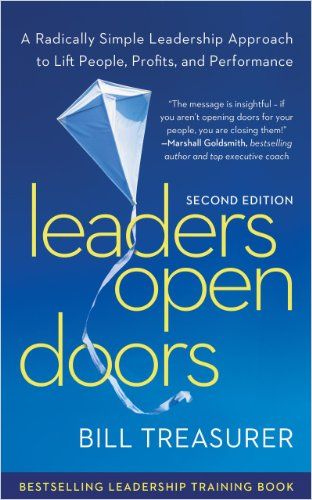
Your new book, Leadership Two Words at a Time, gathers much collected and condensed leadership knowledge like this into chapters, each titled with just two words. What is the concept behind this?
As a long-time practitioner of leadership development, I have worked with many highly accomplished leaders over the years. These leaders have taught me valuable lessons about what it takes to attain and sustain a leadership role.
Over the years, many of them complained to me, saying, ‘You know, nobody ever handed me a playbook when I moved into a leadership role.’ That got me thinking: Why not write such a playbook for newer leaders who may feel unprepared for the role?
Bill Treasurer
So, I codified learned lessons into the book. You can refer to whichever leadership “play” is needed based on your specific situation. The play you need is in the book somewhere. The key is to strive for essentialism: By boiling things down to just two words, it can ease the burden on leaders who often become overwhelmed by the complexity and responsibility of their roles. Over time, this can lead to burnout and a lack of enjoyment in leadership. Once you understand the concept of using just two words, it doesn’t matter if they come from a book. What’s important is that leaders start narrowing down how they define problems, and the solutions to those problems, in the fewest number of words possible.
“How would I categorize this problem with the least number of words?“
Indeed. What’s the focus when facing this situation, even if it takes four words instead of two? I’ll give you an example: I once coached a person who wanted a promotion but struggled with being too intense and desperate. His bosses told me he wouldn’t get the rise because of his behavior. So, I told him to narrow it down. “If you had to describe what they need to see in the fewest words to promote you, what would it be?” He said, “calm and confident.” And that was exactly right. So, he would remind himself to maintain a calm and confident demeanor by saying “CC” before important meetings. The same goes, as another example, for one of the first laws of business in leadership: “No surprises.” Two words, but everyone knows their message: Don’t bring me some surprises late in the game where I can’t help affecting change! By the way, this rule usually applies to communicating with the boss and the other way around: hardly any employee wants to be presented with a fait accompli without consultation.
Therefore, a big part of the book is about role modeling in leadership. So let us try to get the bigger picture: To what extent have the demands on leaders changed recently, and why should they respond?
Well, the current generation of employees is less tolerant of the command and control style of leadership. They value flexibility, work-life balance, and being treated as adults rather than subordinates. This is especially true in industries where there is a high level of employee turnover. However, some industries, such as construction, still value a traditional, hard-nosed leadership style. Conflicts and some initial dissatisfaction are inevitable here. May I give an example?
Sure.
I was with a construction company yesterday. When we talked about psychological safety and emotional intelligence, some leaders said, “Ok, I get it, Bill. But I still need these guys to get the work done.” That kind of underlying resistance exists because these newer management concepts are not natural to them. Here, we’re moving into their discomfort zone as they realize that what got them here possibly won’t get them there.
Command and Control may not extend or grow their business because further steps require a different set of behaviors to meet the incoming generation.
Bill Treasurer
Even in an industry like construction, where leaders are used to a more traditional, hands-on approach, it becomes increasingly necessary to rely on the expertise of others and delegate decision-making. This not only allows for more efficient use of time and resources but also helps to prevent mistakes. To succeed as a leader requires adapting to the incoming generation’s changing expectations and being open to new ways of leading and decision-making.
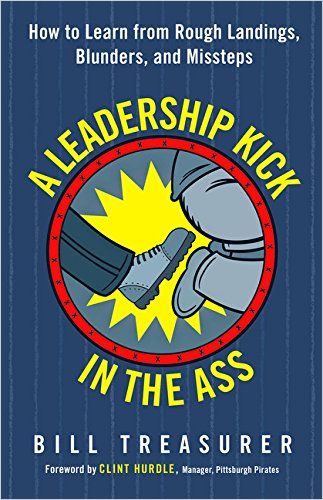
In your book, you write that it is, therefore, vital for leaders to question and challenge themselves. However, one often has the impression that there is either no time or desire to do so.
That’s not easy for many executives, but for starters, I always suggest asking yourself the critical question: What do I want? What are my goals, and how do I need to be as a leader to achieve them? Next, reflect on the people who have influenced your leadership style and how you define leadership. Are you Command and Control? Or more hands-off? Why? What do you believe you bring to the table as a leader? What are your strengths?
But self-evaluation doesn’t stop there.
If you are serious about it, take a personality survey, such as Myers-Briggs or DISC, to gain more self-knowledge. Third, acknowledge the necessity of being open to feedback and trying to improve yourself.
Don’t be afraid to ask for feedback from the people you lead.
Bill Treasurer
It’s a little uncomfortable to do but send out an email asking for honest feedback on your leadership style, where you could have stepped up more, and what improvements they suggest. You’ll be amazed at the practical responses you’ll get!
Many executives still believe this shows weakness. Yet you argue it shows strength and commitment.
It does! To make that clear means to frame courage in a new way.
We must incorporate the idea of vulnerability, opening ourselves up, and becoming exposed to welcoming feedback.
Bill Treasurer
And this goes back to the conversation about the old leadership styles, where you feel like I’m always telling others what to do. “I’m impervious to people’s direction.” That’s a lack of humility! You are no longer the one who knows everything, so embrace vulnerability and be open to getting the feedback you need to succeed. Show humility, your willingness to grow, and get comfortable with candid conversations. Yes, it takes courage, mainly when dealing with discomfort. But the payoffs are worth it.
Talking about courage: In Leadership Two Words at a Time, you write that “As a leader, you will learn that your fear, wherever it comes from, will be your biggest enemy and inhibitor.” Can you elaborate a little on that?
Fear is often a significant obstacle for leaders. But, on the other side, it can also be a source of valuable information! Sometimes we fear failing in front of others. Other times we may fear succeeding because it might oblige us to continue something we don’t enjoy. In most cases, though, fear is rooted in fear of loss, such as losing respect, credibility, or authority. So it helps to ask ourselves, “What is this fear I’m feeling trying to tell me?”
Can you think of an example?
Sure. I remember I was coaching an executive one time, and it was an executive who was quite uptight. She was super bright, maybe one of the most brilliant executives I’ve ever worked with before, but she was intimidating, too, and she didn’t bring people along with her because of that. They would do work because they were afraid of her, but they were afraid of her. She spread fear by transmitting hers to others. So, in a disarmed moment with her over a coaching dinner one night, we started talking about anxiety, and she told me how her dad had died at a young age. She was about 16 when it happened. I asked her: How did your loss impact you? She said: “I guess I learned very early that I had to be self-reliant, never be so attached to something or someone that if they go away, your world falls apart. I don’t want things to fall apart.”
Two things were intersecting here: her fear of losing control, and her transmitting fearful anxiety to her team. Just bringing that to the surface helped improve things. All it took was an honest and courageous conversation.
Bill Treasurer
So how much fear is reasonable, and how much is harmful? Does your portfolio method work here, as well?
(Laughs.) No. But I can tell you: When you’re in a scary moment, when your knees are knocking, when your teeth are chattering and when you got rioting butterflies in your stomach – as long as you’re moving forward with that fear, that is courage.
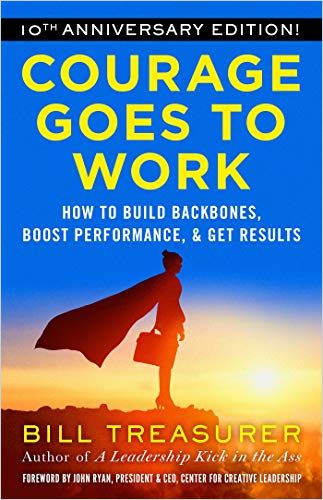
Courage is fearful, not fearless. But if you’re working through it, understanding it, digesting it, arm-wrestling with it, and moving to the other side by doing the thing you’re afraid of, that’s courage. It is acting even though you are afraid, which is, again, connected to normalizing discomfort.
And when it comes to the manager’s or executive’s teams, how can they help on the other side? How can I react if I’m in touch with a leader that transmits fear?
Managing up or leading up is challenging, but it’s also essential. So, first, do your best to develop a trustful relationship with this person by delivering excellent work and offering candid advice. I think the straightforward way then is to have a conversation with your boss and ask them this question:
Boss, do you need me to be a ‘yes’ person and a brown noser?
No boss is going to say “yes.” And then you say to them: “I tell you what, you have my promise: I will not be a brown noser. I will be a truth-teller with you. But while we’re talking about this, would you give me some coaching on how to disagree with you so that your ears won’t see it disrespecting your authority?”
That sounds fair enough, and the supervisor will provide some helpful information at that moment. But what if they forget about it again in the following critical situation, and anxiety takes over?
When you see this kind of behavior from that person again, you can connect it to slowing their people down from getting their goals. Explain how their behavior is blocking them from reaching their goals: “Hey, you know, we’ve talked about this, and I know this goal is imperative to you. We’re all working very hard to get to this goal. Yet, it occurs to me that sometimes when you come and obsessively check up on people’s work, you have a certain intensity – and it actually slows us down from getting the goal. I notice that people are working in fear and it’s causing them to take their eyes off the mission.
And if that doesn’t help either?
Another way to manage or lead up is to discuss team norms. Consider employing the value that the famous consulting company, McKinsey, uses: The obligation to dissent. It states that if you have a point of view that you can substantiate and that helps improve the team or will enhance people’s ability to do excellent client work, you have an obligation to all stakeholders to state that dissenting opinion. Even if you’re dissenting from the client’s preferences, as long as it is done to improve things or make the client’s competitive position stronger. As a leader, it helps to clarify these values, standards, and norms explicitly because they’ll guide everyone’s behavior. But, again, defining them will take hours of uncomfortable and courageous conversations.
About the Author
Bill Treasurer is CEO (Chief Encouragement Officer) at Giant Leap Consulting. He also wrote Leaders Open Doors: A Radically Simple Leadership Approach to Lift People, A Leadership Kick in the Ass: How to Learn from Rough Landings, Blunders, and Missteps, and Courage Goes to Work. He and John R. Havlik co-authored The Leadership Killer: Reclaiming Humility in an Age of Arrogance.

